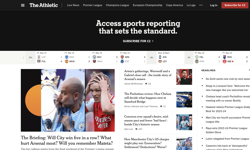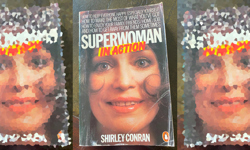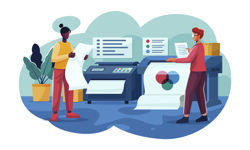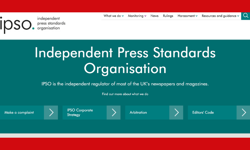First let’s get the terminology straight. When we talk about digital versions we are not talking about web sites or online content. We are talking about replicas of newspapers or magazines delivered to your desktop. It will have the same look and feel as the print version but it will be on screen.
Before we get onto the meaty stuff it might be a good idea to persist with the basics for a while. A quick look at the production process of a digital version might help put things in perspective. Broadly speaking the production process for the digital version follows the same route as the print version up until the point where the PDF files are made up. It is at that point that things change. For your print versions you will bike the cd down to the printers in time honoured fashion. For your digital version you will take the cd and reformat the PDF files for digital viewing. You will either do this in-house or you will subcontract this process to a third party supplier like Applecart Solutions, Newsstand, Qmags or Zinio. This will result in an electronic file. You (or again your third party supplier) will then email your subscribers to alert them to the fact that the digital version of the magazine is ready for them to download. The subscriber then downloads it and start reading!
When trying to get your head around the commercial opportunities that digital versions offer, a good place to start is to look at what’s in it for the subscriber. Although, before we start, a quick word on eye strain. You will be hard pushed to find anyone anywhere who says that it is easier to read things on screen than from the printed page. The world is round, elephants are big, Arsenal’s going to win the league and its easier to read from paper. Let’s park that thought because the digital vs print debate is not about eye tests.
According to Tony Westbrook, editorial director of VNU, there are "things you can do with electronic versions that are not possible with print". There are seven areas where the reader gets an appreciably different experience with digital: speed, familiarity, rich media, interactivity, navigation, access to archive and storage.
Speed
If you like to be first to get the news, read the reviews, see the job ads, check the property pages then subscribing to the digital version will put you hours ahead (in the case of a daily newspaper) or days ahead in the case of magazines. If you’re an overseas subscriber then the time differential could be measured in weeks!
Familiarity
For those of us hovering uncomfortably round the 40 mark, we are more familiar with the print medium. For the 16-30 generation which grew up with computers and for whom IT holds no fears, then the screen is something they feel very much at home with. Publishers who fail to cater for their needs risk losing out to those that do. According to Kit Webster, CEO of Newsstand, digital versions allow publishers "to attract new readers from younger demographics who are perhaps being lost to traditional print media."
Rich media
By this we mean the inclusion of audio and visual material within the digital version. Even amongst those publishers already offering digital versions, only a minority offer rich media. However the opportunity is there and it is undoubtedly one of the key differentiators between print and digital. Digital subscribers can click on an ad and see and hear the full TV commercial, listen to sound clips of recent music releases, listen to, not just read, the interview, be taken on a guided tour of the house they fancy in the property section and in the case of the Manchester United matchday programme (MU Review) see the goals scored! The only limiting factor is the publisher’s imagination. The limited use of rich media to date is partly down to the fact that the greater the degree of rich media content, the larger the file size and the longer the download time but it also has something to do with lack of commercial vision.
Interactivity
The success of TV shows like "I’m a celebrity …" and "Pop Idol" shows the appetite audiences have for taking part. They like phoning in, voting, filling out questionnaires and completing surveys. Digital versions make it easy for the reader to take part and get involved. Furthermore the copy, paste and forwarding technology allows readers to share experiences with others. Enterprising publishers will start to use this functionality to start refining their editorial offering.
Navigation
The recent TV ads for the compact Times highlight the difficulty of page turning when reading a broadsheet on a crowded tube train. There is simply not enough elbow room, goes the message, and you will find a compact much easier. Perhaps true, but on a digital version all such navigation issues are irrelevant. Page turning is usually a question of clicking at the bottom right hand (or left if you’re heading backwards) corner of the screen. Zoom straight to the section you want, direct from the contents page. Click on the continuation arrows or via other embedded links and you are instantly at the page of your choice.
Access to archived information
Digital versions provide the technology to give the reader almost unlimited access to archived data: back issues as well as other published material. Like so many digital features, the technology is already there but usage is still intermittent.
Storage
For the "read it and bin it" brigade, this means nothing. But for the hoarders and collectors this could mean the difference between staying put and moving home. Go digital and the room full of back issues of Rolling Stone suddenly becomes your third bedroom.
OK that’s what’s in it for the readers. Now for the really big question – what’s in it for us? How are digital versions going to make or save us money?
Subscription model
The offering of digital versions can help your publication win more subscribers in some sectors and prevent you losing subscribers in other sectors. Take your Scottish expat in Chicago or even Cornwall. He would love to get The Scotsman every day, but a subscription to the print version is extortionate and arrives days late anyway – consequently he doesn’t bother. With a digital version he pays about the same as his print buying cousin back home, but gets it three hours earlier. For the newspaper sector there is huge subscription potential in targeting expats. There is no cannibalisation here, this represents new revenue.
The other thing to be said about subscription revenue is, if you are not offering your current subscribers a choice then you run the risk of losing them to a competitor who is. This is not a matter of hard selling the digital option, simply of giving subscribers a choice. On the remittance slips or online forms for new subscribers and renewers simply add a tick box giving them a choice of receiving their subscription as "print" or "digital". Of course you can also offer "both" and refine your subscription rates accordingly. Other options include offering the "digital" version free as a service only available to subscribers of the print version. Haymarket’s Autosport makes its digital version (called "Autosport First View" and created by Applecart Solutions) available only to subscribers. Autosport plans to further utilise technology, specifically dynamic internet geographical recognition systems, which will recognise the source of the internet enquiry, to make the digital version a paid for service for non UK residents.
Advertising model
A common misconception is to equate digital versions with web sites and to talk about a single advertising approach for both. Web sites typically use banners, towers and pop ups whereas digital versions deal in the same advertising currency as print; double page spreads, full pages, halves, quarters etc. At its simplest, there is no visual difference between the ad on the digital version and that in the print version. (Although, of course, the digital version does allow you to do more with the ad through the use of rich media.) The big question is whether advertisements on the digital version are as effective as those on the print version and it all boils down to "opportunities to see". To mix metaphors - the debate is still raging and the jury’s still out. From the publishers’ perspective the hope is clearly that they will be able to maintain their ad rates irrespective of version. Time will tell. One aspect that is universally agreed upon, even if an industry wide charging model has not, is the potential to charge advertisers more for rich media advertisements. IBM takes a full page ad for £X – will they be willing to pay a premium to make their ad in the digital version rich media? Clearly the potential is there.
Access to content
Conceptually there is not a lot that’s new in the above subscription and advertising models for digital. For both digital and print, readers are still paying to read your content and advertisers are still paying to display their wares. Where digital versions offer the potential for completely new revenue streams is in providing chargeable access to premium content. Not the content of that issue itself but access to data archives linked to from within the digital version. For instance, you run a feature on US presidential elections concentrating on the Bush vs Kerry televised debate. Your print version runs an accurate if somewhat dull account of the proceedings. Your digital version enhances it with audio-visual clips BUT then provides you with the opportunity to see audio-visual clips of past presidential debates (Bush vs Gore, Clinton vs Dole, Clinton vs Bush Snr, Bush Snr vs Dukakis right back to Kennedy vs Nixon) at a charge. But "I don’t have access to those old clips" thinks pessimistic publisher ….. well, do a deal with someone who does! I don’t know about you, but I would pay for it – assuming that the payment mechanism was quick, convenient and secure.
Distribution model
Jeff Bruce of Zinio says that "manufacturing and delivering a digital copy can cost 50% or more less than paper." For Peter Watkinson, group marketing manager of KHL Group, a key motivation was to save costs. KHL publishes controlled circulation magazines and 85% of their circulation is international and the ever increasing international postal charges have led the company to look long and hard at their cost base. As a result, seven of their titles now offer digital versions and they currently have over 12,000 digital registrations. Peter anticipates that this will produce significant distribution cost reductions in 2004 and these savings will grow as the digital readership grows. KHL is alive to the fact that digital versions can offer more than just cost savings and indeed some of their advertisers have started to get more adventurous, for instance translating the text of one advertisement into French for all France bound copies, but it was the need to keep a check on distribution costs that took them down the digital road in the first place.
New products
For VNU, another UK publisher heavily involved in digital versions and the publishers of one of the first UK titles to have BPA audited figures for digital distribution, the motivation was different. According to Tony Westbrook, VNU saw digital versions as "an effective way of launching new products". For instance, he continues, "IT Week is aimed at senior IT professionals, but the fact is that there are large numbers of people who want to receive it, who are outside the terms of control. As it happens a lot of these people are interested in network issues, but the fact is that it was not cost effective to launch a print version of a network related title. So we launched Network IT Week as an e-book with a circulation of 17,000." Network IT Week is a 100% new product and is 100% digital and works on two different levels; firstly it acts as a completely new revenue stream but secondly it further reinforces the IT Week brand.
Increased circulation
Another obvious benefit, and one being particularly exploited by controlled circulation publishers, is opportunities for increased circulation. Typically a controlled circulation title will have a segment of potential readers who hover just outside (or even well outside) the terms of control. Often these are junior staff or students. The current business model does not make it economically viable to serve them hard copy magazines however these are the qualified readers of the future and introducing them to your brand early on in their careers could produce dividends later. Digital versions provide an economically viable way of securing the future of your top brands.
Getting started
So far so good. A case can be made that readers experience tangibly unique benefits with digital. A commercial case can also be made even if the really big bucks are a couple of years off. You’re interested, so how do you get started?
Well it needn’t be hard. There is a tendency to overcomplicate things upfront. Warwick Brindle of Newsstand advises you not to "think about the technology, but rather think in terms of digital simply being a new distribution channel – in effect a different size of van." Jeff Bruce of Zinio also warns against "over thinking it". The key things you need to decide up front are; firstly whether the market you serve might be susceptible to digital, secondly what offer you are going to make, thirdly who are you going to make the offer to and fourthly the timescale of the test. Another bit of good advice is "to think big but start slow." You don’t have to have all the answers up front and its best to leave as many options open as possible. Tony Westbrook says that the VNU approach could be characterised as following the audience rather than trying to lead – surely a sensible approach in such a rapidly evolving marketplace.
Once you have worked out your basic strategy and on the assumption that your production process already produces PDF files, then you could be up and running in one to three weeks. Whereas the production process is relatively straightforward, fulfilment issues are, as ever, a bit more complex. Right at the start of the planning process you need to talk to your fulfilment provider and make sure that they can handle the email broadcasts and that they can handle all the reporting issues and processing of bounce backs. Even if you are not auditing your digital distribution I would recommend that you ensure that your fulfilment complies with BPA audit procedures for digital distribution right from the start.
There will be two main areas of cost. Firstly the cost of converting your PDF files to digital format, which according to Jeff Bruce can be as little as £1 per page. Secondly you have the cost of delivery. Bruce says that typically the delivery charges will cost "50% or more less than the cost to manufacture and deliver an incremental print copy."
If you’ve got this far and are still interested then I would suggest that your next step is to contact a third party supplier and get a dialogue started. All the services mentioned above can be handled in-house – indeed KHL does it all themselves. However unless you have already taken a firm decision to handle it in-house I would recommend you contacting a third party supplier at this stage.
There are some production choices that you will need to face, although not necessarily all of them right at the start of the process and again it’s best for these choices to evolve from dialogue. Don’t lock yourself in a dark room.
| The main production choices are: 1. Third party vs self build. Do you go down the do-it-yourself route like KHL or do you rely on a third party provider. 2. Open platform vs proprietary reader. Some third party systems require readers to download an additional piece of software – a proprietary reader - whilst others operate using an "open" platform such as Adobe Acrobat. 3. Downloadable files vs web. Do you want your digital version to be downloaded to the reader’s desktop or read on-line? Some suppliers offer a web browser alternative to file downloads. 4. Replica vs repurpose. Do you opt for an exact replica of your print version or do you opt for some customisation to take advantage of the technological opportunities provided by digital. |
Being left behind
Is there a downside to not offering a digital version? The fact is that digital is a voyage of discovery. Increasing numbers can see theoretical benefits but the industry as a whole is still struggling to make commercial sense of it all. However those companies currently engaged in the process and at varying positions along the learning curve will be in a much better position to make profits than those standing on the sideline. Jeff Bruce says "like the airlines, publishing needs to remake itself and digital is one very attractive solution that has the potential to overcome many current challenges". On the dangers of doing nothing he draws a health analogy – "it’s like someone who’s overweight or chain smokes. They most always agree they need to lose weight or quit smoking, but never today, always tomorrow. Sometimes the consequences are severe, sometimes not."
Whilst digital numbers are still dwarfed by print, there is an upward trend of digital usage, which will be accelerated by the continuing takeup of broadband services. What is holding it back? Two things – lack of imagination on the part of publishers and the innate conservatism of the advertising community which, certainly here in the UK, is being slow to embrace the new opportunities. The future is incredibly exciting. So if you’re not one of the ones offering digital, my advice is to make sure you’ve got a good reason.
| How the audit bodies measure digital versions ABC. The current position of the ABC is that digital versions and print versions can not be included in the same audit certificate. However change is in the air. In December 2003 the ABC announced that the ABC Council had decided that "e-publications should be reported on a certificate but not included in the total average net circulation or "headline" figure". Work has now started on drawing up audit rules. At time of going to press, no decision has been made on which will be the first audit period where digital copies can be included. The Council also agreed a recommendation to instigate research into the reading experience of e-publications, specifically to establish if the advertisements have the same opportunity to be seen as in print copy. The AOP (Association of Online Publishers) took exception to the fact that digital copies will not be included in the "headline" figure, but the ABC’s position is that until there is consensus between the buyers (advertisers and agencies) and sellers (media owners) as represented on the ABC Council no decision can be made. BPA. The BPA has allowed the inclusion of digital and print versions on audit certificates and their inclusion in headline figures since December 2001. Digital circulation is reported separately throughout the BPA circulation statement. Separate columns are used to report "Print Version Only", "Digital Version Only" and "Both Print and Digital". The "Average Qualified Circulation" (or headline) figure includes the digital figures, although media buyers can still get separate "average qualified circulation" figures for "print only", "digital only" and "both print and digital" because these figures are reported separately under "Additional Data." The American publication SD Times was the first title to report digital versions on their BPA certificate. In the UK, VNU and KHL Group both reported digital elements in their January-June 2003 BPA statements for a number of their titles. |
| Thank you to the following for helping with this article: Warwick Brindle, Newsstand * Jeff Bruce, Zinio * Dominic Duffy, Applecart Solutions * Russ Haderer, BPA International * Patrick Kenny, Qmags * Peter Watkinson, KHL * Kit Webster, Newsstand * Tony Westbrook, VNU |










